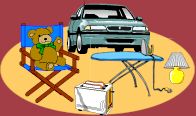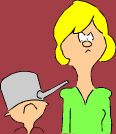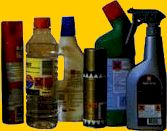|

|
|
What is
product evaluation?
A product is a term for any item that
has been manufactured and is useful to you. You are a consumer when you
buy it or
use it. Evaluation of the product means that its suitability and safety for
use by consumers are checked out. All products made are required by law to be safe to use. This is not a requirement that they are absolutely safe - that
is not possible. Nor must they be safe at unbearable costs to industry - that would put innovation at risk. But they are required to be as safe as it is reasonable to expect.
|
 |
 |
This allows designers and manufacturers to be more creative in their product design,
but it makes it more difficult for them to ensure that they have complied with the appropriate regulations. Even where there is specific legislation, manufacturers may not know if they have done enough to show due
care, which is their main defence if a product supplied by them is subsequently judged to be unsafe. Evaluation will help.
|
|
| |
Types of evaluation
Specialist laboratories can carry out testing of a product. They might do
this for three main reasons:
- To prove that the product complies with relevant standards
- To investigate accidents to discover whether a product design fault caused the accident
- To compare a product with others of a similar design
Tests can
include mechanical, physical, electrical, chemical and
inflammability tests. These can evaluate product energy
efficiency, reliability and durability, that is, the product should continue to work as intended over an appropriately long period of
time. Finally, and most importantly, these tests can help to assess
safety, but a fuller evaluation can be provided by using
ergonomics because it looks at issues from the user's point of
view.
|
| |
|
|
Creating a safe product
Product safety is the main issue to consider when designing, evaluating or purchasing a product. A product may be unsafe for two reasons:
1. It might not have been produced as intended, because although the
design was safe, there was a fault in the manufacture or inspection process —
a manufacturing defect. For example, the locks on a folding chair may
fail to engage properly, causing the chair to collapse when sat on.
2. The product might have been produced as intended and functions
properly, but is still unsafe — a design defect. For example, a
folding chair may unlock unexpectedly when the user tries to move it and
traps their fingers. Design defects in products generally occur because
the assumptions about the abilities and behaviour of people using the products are
wrong, or are not taken into account. If these defects are not put right,
they may cause people to have an accident with the product. An ergonomist can provide manufacturers with the necessary
information to minimise the risk of an accident happening
.
Designers and manufacturers make products based on how they think people
will use them. To create a product that is safe and easy to use,
you need to find out information about the users
and their behaviour with the product. This information might be about:
The product user
- Anthropometric data can make sure that
the product is the right size for the intended user or range of users.
See the anthropometry topic for more
information.
- If the product is intended for elderly people or children,
it will need to be designed to deal with a limited range of reach or movement.
Elderly people often have stiff joints that make it difficult for them to get up from seats which are too low, or to hold awkward objects
properly.
- Gaps and clearances should suit the
user. For example, bars on cots and playpens should be close enough to
each other so that a child cannot get their head caught between them.
- Designing a product using male body
dimensions might mean that is it not suitable for use by females (and vice
versa). Ideally a product should be suitable for use by small (5th percentile) women as well as by large (95th
percentile) men (the smallest to the largest user).
 The product should not involve users in excessive physical effort,
which might, for example, raise their heart rate, breathing rate, body
temperature. The product should not involve users in excessive physical effort,
which might, for example, raise their heart rate, breathing rate, body
temperature.
- Children are not good at understanding
safety issues. They tend to be involved in many more than their share of accidents
in the home, ranging from swallowing household chemicals and medicines (often pleasantly scented and coloured, and not always in child-resistant containers) to
scalding caused pulling on the lead of a boiling kettle. Suitable precautions
for safer design are needed even if the product is not directly intended
to be used by children.
The product environment
- The product should be evaluated under
the same conditions as it will be used in. Some products, such as
gardening tools are obviously intended for use out of doors and so must
allow for users wearing gloves when it is cold, or for being used in the
wet.
- Other products, such as bleach, may be used in a steamy atmosphere
like a bathroom, and users may have trouble reading instructions and
warnings if they are too small, as they may not be able to wear their glasses.
The product itself
- The product should be comfortable and
easy to use. This can be checked during trials by asking users what they
think about products through a structured experiment or questionnaire.
Checklists can be used to ensure that all aspects of design and use are
assessed.
|
Legal requirements for product safety
The General
Product Safety Regulations (GPSR) 1994 and the Provision and Use
of Work Equipment Regulations 1992 require producers to minimise
hazards and risks in the use of their products. Producers and
suppliers have a responsibility to provide a product that must,
as far as possible, be safe. Therefore, there must be an
assessment of the safety and safe use of a product. This
includes the product's characteristics, the type of user and their
views, the product's use under normal and occasional conditions,
and the effectiveness of the instructions provided.
|
|
|
|
Use and misuse |
|
You may have created a safe product in
'normal' use but products are not always used as
intended. There are likely to be unreasonable, careless and 'odd' consumers who use products for strange
things! If you are making a product, you must try to imagine how it
might be misused and design it so that it will still be safe.
Obviously, this is not easy! To help with this, you can do a number of
things.
|
| 1 |
Review specific standards and general safety legislation that
apply. Details of standards can be found from the British Standards Institution. |
| 2 |
Look at accident statistics to see how relevant injuries are
caused. Detailed analysis of accidents can help identify patterns of behaviour that, coupled with a particular product,
lead to an accident. The chance of being involved in an accident depends
on whether you realise that there is a hazard involved, whether you
understand what it is, and whether you can do anything about avoiding
it. Tables of accident data are collected by the Home and Leisure Accident Surveillance Systems (HASS and
LASS) and are available from the Consumer Affairs Directorate of the DTI. |
| 3 |
Look at published
data, such as
anthropometric tables, to see if there
might be a problem between a person and a product or environment. This can be particularly helpful when the user
may be vulnerable, such as a child or an elderly or disabled person. If you know what size a
user may be and what strength they may have to use the product, you can work out the consequences of them using it. |
| 4 |
Investigate complaints involving
similar products. People often report an incident with a product that
was relatively insignificant, but it might otherwise have had serious
consequences, and this can be useful information. |
| 5 |
Use ergonomists to evaluate a product
and anticipate problems. These 'expert appraisals' can be carried out
using checklists that ensure that all aspects of the product and its use are considered.
These tests are useful for larger products such as kitchen appliances
like cookers and fridges ('white goods'). Expert appraisals are particularly useful for carrying out investigations into products that have either been involved in accidents or where there are serious doubts about their safety. In
these cases, the ergonomist can consider the abilities of a range of
users. Expert appraisal can also be used before user trials to help work out the test method for the trials. |
| 6 |
Carry out user trials with real, representative
users. These are the most valuable source of information about a product's performance and can provide the best quality of data to make a decision to change a design or make a new product. They typically involve watching people carry out a careful
set of activities using the product. A special type of trial is a home placement of products
where a product is given to someone to use in a real setting for longer periods of time. In these cases users might have the
product for 1 or 2 weeks so that a whole cycle of use can be studied. They might be asked to keep a diary of use during the time and report on any problems, or be given a series of tasks to do and report on. They will then be observed using the product at the end of the period, when they will be more familiar with its
use. This can be more realistic than a laboratory based trial. Examples
of products that might be tested by a home user trial are domestic
appliances like kettles and vacuum cleaners, which are familiar to most
people, and do not need to be installed.
Supervised user trials may be used
where there are known safety issues, such as with garden compost
shredders or lawnmowers. These trials are also good for giving people
more tasks in a given time than they would normally get at home.
|
| When you have all this information
about a product, you can then carry out technical tests to see what will
happen when your product is misused in the ways that you have identified. These
will provide the answers to the 'What if?' questions. Technical tests can be used to simulate a real user. If used with data on strength and size, it is possible to test products in a similar way to how they will normally be used. In many cases this is the basis for Standards, with an additional allowance being made for a margin of safety. In the case of dangerous products, or those that have already caused an injury, it is clear that the only safe way to test is to do it with
technical tests rather than endanger users in trials.
|
|
 |
|
?
? ? ? ?
HAZARD
v
RISK
A hazard is a potential source of harm that
could result in physical injury and/or damage to health or property. For example, a trailing cable might be a trip hazard - it might
cause you to trip and injure yourself.
A risk
is the probability that an injury will occur. If you are not
looking where you are going and you walk towards a trailing
cable, the risk is quite high that you will trip over it and
injure yourself.
|
|
|
| |
 Instructions
and warnings Instructions
and warnings
It is very important to evaluate the instructions and warnings that
accompany products. The content and appearance of instruction manuals and warnings is
very important if they are to be understood properly. In the workplace,
instructions and warnings reinforce what has already been learned through education,
training and supervision. Obviously, at home, this is not available and
users must rely solely on printed instruction manuals and warning labels.
These often fail because they do not provide the right amount or type of
understandable information.
You do not need to tell the user about
obvious hazards, for example, that knives are sharp. But you must warn users of the non-obvious hazards of
your product, both for its intended use and its foreseeable misuse.
There are three types of warnings that
you can use:
- Labels printed on the product,
- Separate text in the instruction
manual,
- Highlighted messages throughout the instruction manual.
The main purpose of all warnings is to
get users to behave more safely with products. To be effective, a warning
must:
- Be seen - it must catch the user's attention by its design and presentation.
- Tell the user about the hazard and how serious it is.
- Tell the user about the consequences of failing to follow the instructions or of misusing the product.
- Include further references to other sources of information about hazards.
Warnings are not an excuse for bad
design. Warnings will not prevent a product being considered defective
by law if the hazard could have been removed through proper evaluation and
design in the first place.
|
|
|
|
Product
Evaluation FAQs
Q. Please can you tell
me the ergonomics or safety of game cases, as I am doing a project at
school and can't find the basic safety regulations anywhere? Answer
Q. What are the Safety issues
to consider when designing a bedside table with a fitted light?
Answer
|
|